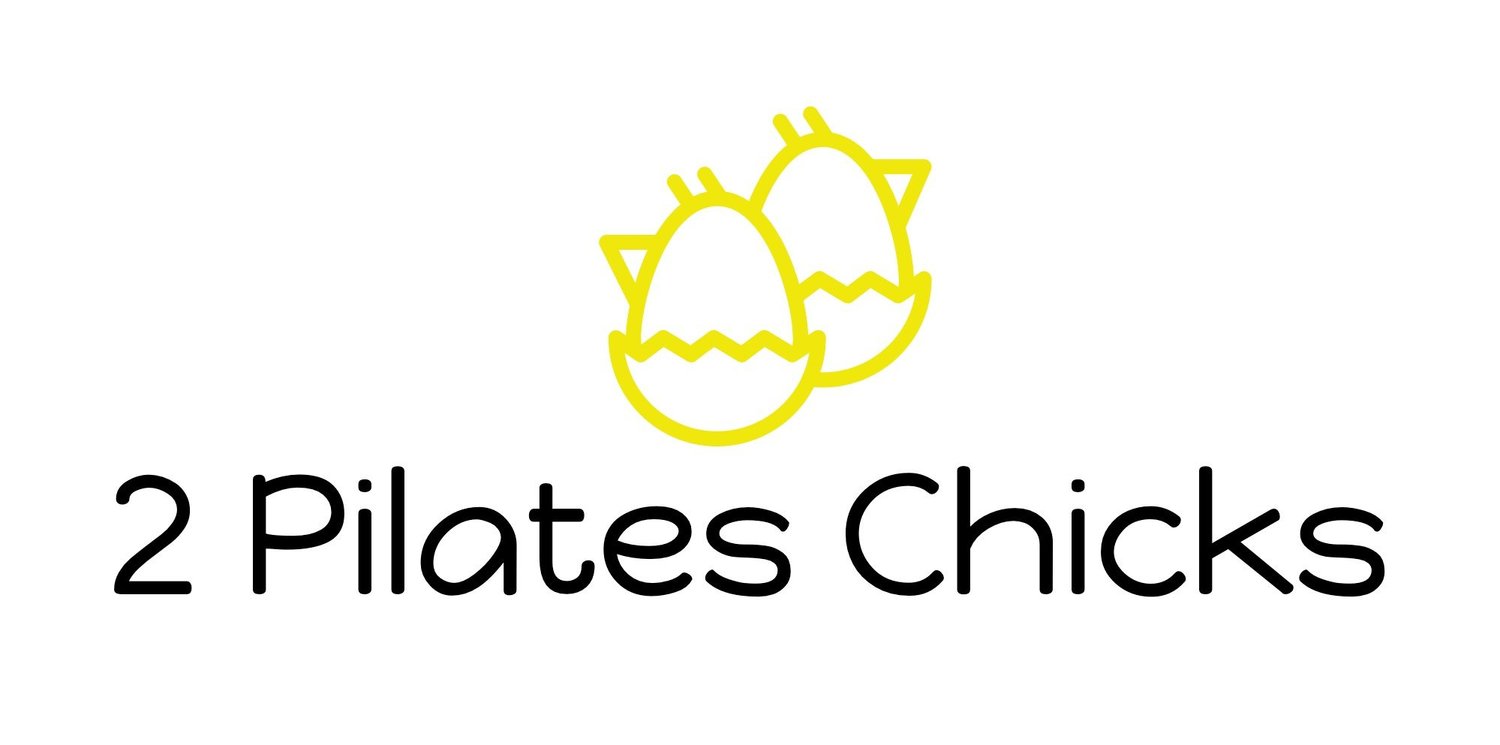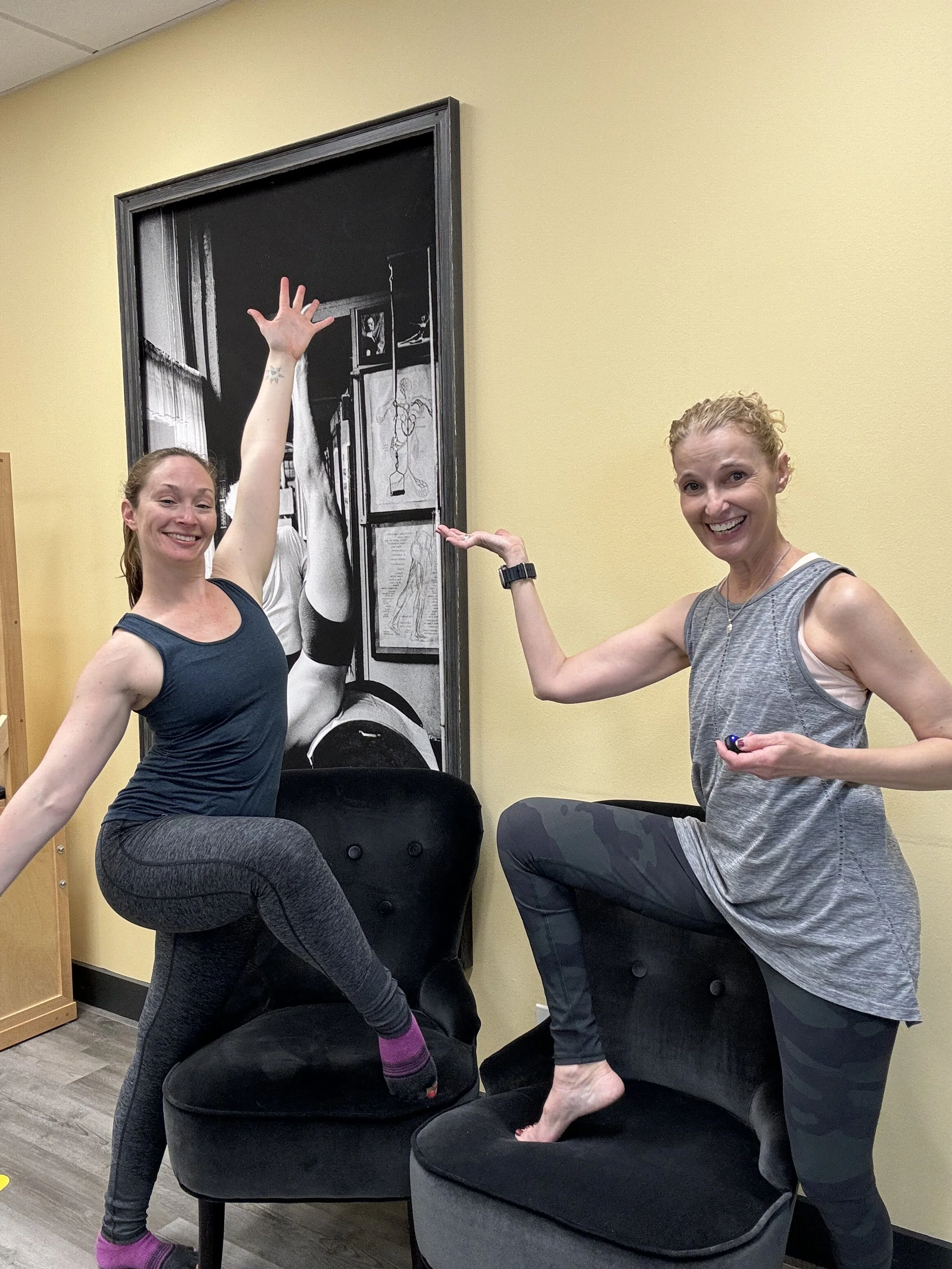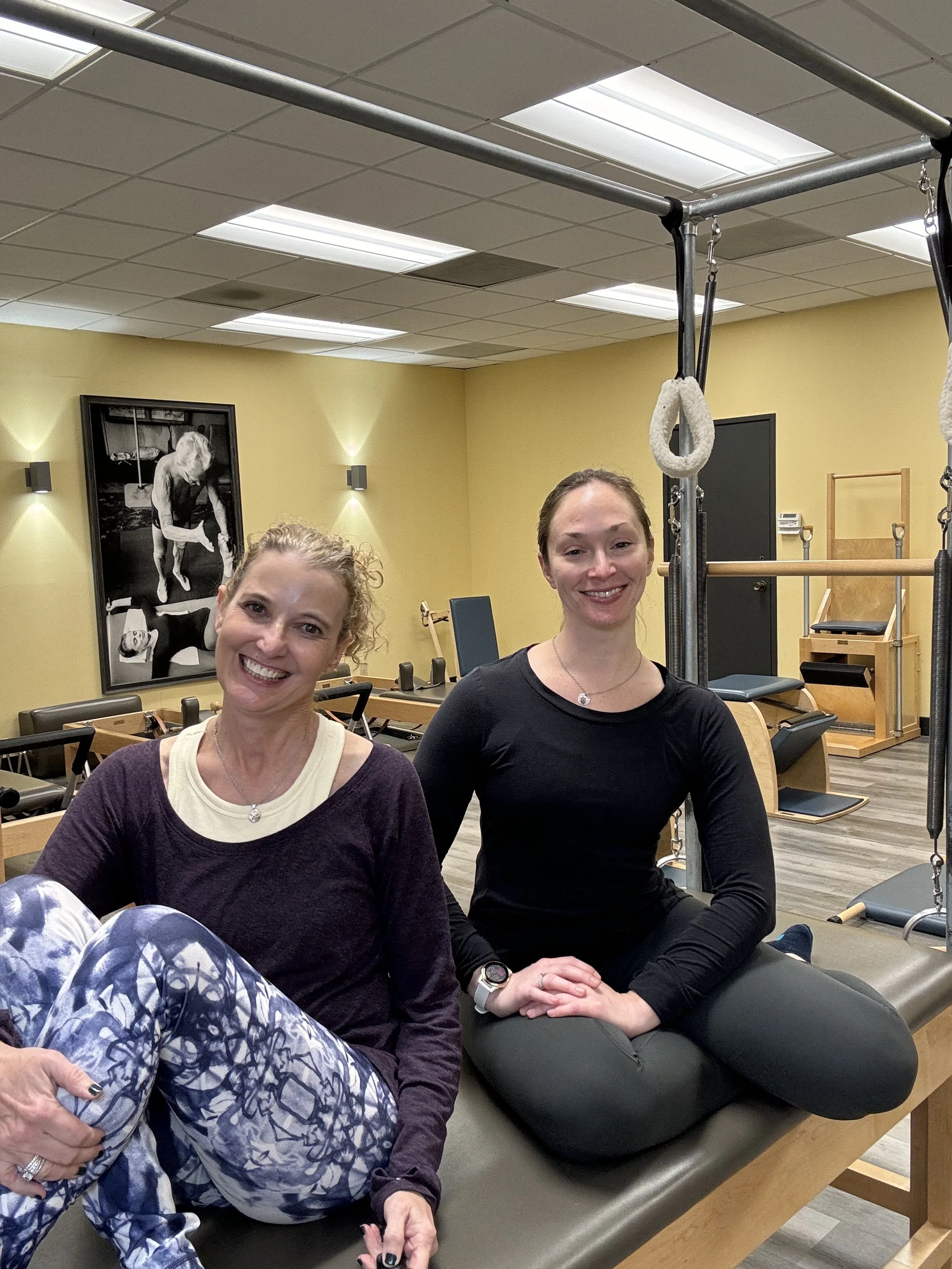Navigating Pilates Clients fears with MRI results
Do we understand what an MRI means when a client comes in with a new scan? How do we navigate client's fears and misunderstandings about a new diagnosis? How can we continue to feel confident teaching a Pilates session with a client who has new information from an MRI?
In our latest podcast, season 5 episode 7 "Discussing MRIs with Clients in Pilates", we're talking about how to navigate client fears around pain and new diagnosis results from MRIs. Clients may come in with apprehension after getting scans done with their medical team. We need to understand how to approach a session with a client who is nervous about their MRI and help them feel supported and safe in the studio.
Often, clients think the results of a scan show that they're broken and falling apart. They're then afraid to move out of fear of breaking themselves or worsening their condition. As teachers, we are authority figures for our clients, so we are a level of support to help them understand the scan, and continue to move and feel good. We can help clients feel confident, safe, and capable in the studio, and help them understand the results of their scans and the mechanisms of pain to continue progressing in their movement practice instead of feeling limited by the MRI results. Most importantly, we can show clients they are not broken or fragile just because an MRI shows many issues.
MRIs can be extremely valuable tools to see what's going on with a client if they have lingering pain or new or worsening symptoms. They give a detailed report on what things look like inside the body and tend to be a gold standard in orthopedic diagnostics. However, they can often show the same results in normal pain-free findings as in someone with pain. Many imaging findings are common but still result in scary-sounding diagnostics that look alarming, even though the results are often expected for specific age groups. The likelihood of seeing certain results on an MRI increases as age increases for the patient, but it is very normal.
Studies show that among people under 40 who do not present back pain, an MRI will show 50% have disc degeneration, 30% have desiccation (disc dehydration), 30% have disc degeneration (disc height loss), 40% have disc bulge, 30% have disc protrusion. These rates of normal, asymptomatic findings increase as the patient's age increases. For all of these common findings, exercise is protective and beneficial, assisting in reducing the rate of progression of these issues, so if Pilates teachers understand the common findings in an MRI report, we can help clients feel better long-term even when clients are frightened of these findings.
It's important to give clients perspective when concerned about an MRI. The changes clients see in a scan can also be found in scans of people without pain. This can lend an entirely new outlook on pain and MRI results. Causes of pain are not easy to diagnose from an MRI even when it shows degeneration because pain is complex, and where a scan shows tissue or joint issues may not actually be the source of pain. A majority of findings have nothing to do with the site of pain and may have been present for a long time before pain onset. We can help clients shift their understanding of what tissues and joints can look like and how they can change both with and without associated pain or pathology. Discussing the complexity of pain, rehabilitation, and normal orthopedic variety can ease clients' fear over their MRI results.
Clients with similar MRIs will have different levels of pain and functional ability because the scan does not define the pathology or the person. Many scans show disc pathologies in asymptomatic individuals, and it does not say much about whether someone will experience pain from that disc injury now or in the future. Whether or not an individual develops pain has much more to do with a variety of other factors including sleep, immune system function, stress, nutrition, genetics, and numerous other biopsychosocial factors.
Pilates teachers must always refer out if a condition is beyond their credentials or comfort level to teach safely and effectively. However, a majority of orthopedic conditions benefit from exercise and movement, so it is our goal to instill confidence in our clients to be able to continue their movement practice even with newfound pathologies.
Most importantly, teachers must remain within the scope of practice. For Pilates teachers, it is NOT within the scope of practice to read an MRI image or to diagnose a client. We can, however, read the doctor's report of the MRI if the client grants access, to help guide the client's sessions to be safe and effective for their pathology. An MRI report will have a whole list of items mentioned, so teachers need to be aware of what common findings are, and what common statements mean. The client needs to have a discussion with their physician or physiotherapist to be cleared for movement and exercise and to have a proper diagnosis, but we can also help them realize how common many findings are in an MRI report.
Common findings include stenosis, disc bulges or herniations, and some level of arthritis, osteoporosis, and degeneration that can be there for decades without any pain. It is what we tend to see in a majority of MRIs, but it doesn't necessarily mean the person will have pain or have functional limitations, or any change in their life in the long term. Each of these conditions benefits from continuing to exercise throughout the lifespan.
If someone does have pain or functional limitations and that is why they get an MRI, we can help the client understand their pathology and diagnosis do not define them. They're not broken or fragile because of what the scan findings state. Ideally, all clients will be diagnosed by their medical team based on the scan results but the path of rehabilitation should be the scan results in addition to functional levels of movement and rate of pain, but not solely from the imaging. Clients will tend to have a fear of pain with chronic or recurring issues, fearful of a flare-up or reinjury, especially after hearing scary-sounding terms from an MRI report. If we understand the potential limitations with the report we can still support their movement practice, freeing them from being stuck in getting defined by their injury.
Pilates teachers can create a safe, supportive movement environment. Pain is information, MRIs give information, but neither define nor diagnose on their own. Clients can still move and have functional, active lives even with new MRI results. With injuries, it can take time to be able to move in a normal, unrestricted way. Flare-ups do happen, and it takes time, patience, and appropriate movement dosage to be able to get out of a pain flare.
During the acute phase of an injury a client is dealing with the injury and pain constantly, and it can be frustrating and scary. Once the acute flare-up has subsided, we can help clients feel supported if they know we understand their condition, look at the report, listen to their fears, and acknowledge what they're feeling. When a client trusts our knowledge, expertise, and empathy, they can feel safe in the studio to be able to relax in their movement sessions instead of being guarded by an overactive nervous system. Being able to relax, feel supported, and get in movement is a huge step in healing and navigating recurring, centralized, or even acute pain.
Pilates teachers should stay calm when a client comes in with a new MRI report. Do some research about the pathology, and don’t be afraid of the client's injuries. At first, we stay on the conservative side to see how the client feels in movement, following appropriate contraindications and safety guidelines. If a teacher isn't comfortable teaching a specific condition, refer out to a more experienced/specialized teacher, or a physical therapist, or ask the client to speak to their physician. However it is important to understand the majority of findings in MRIs are likely not where the pain is coming from, and many of the findings are quite common and expected. We can show compassion for the client's anxieties and fear from the report, while also gently reminding them of the complexities of pain, and the limitations of MRIs, but always staying within the scope of practice, and following updated, accurate information in research, not opinion pieces or social media influencer posts.
Overall, MRI reports will always seem scary because they will find many different things from the scan. We can help clients continue to feel confident, safe, and capable in the studio by helping them understand the results of the scans, and the mechanisms of pain to be able to continue to progress in their Pilates and movement practice, and we can show them they are not broken or fragile just because an MRI lists a variety of pathologies. Even after a scary MRI, Pilates will be there for the client to help them continue to move and feel good, focusing on abilities, not limitations. Movement is beneficial even with these findings, and Pilates can improve mobility, strength, and overall well-being for clients.






